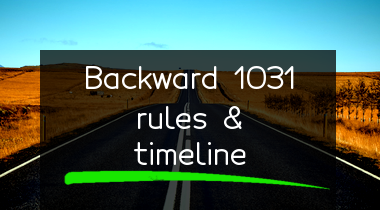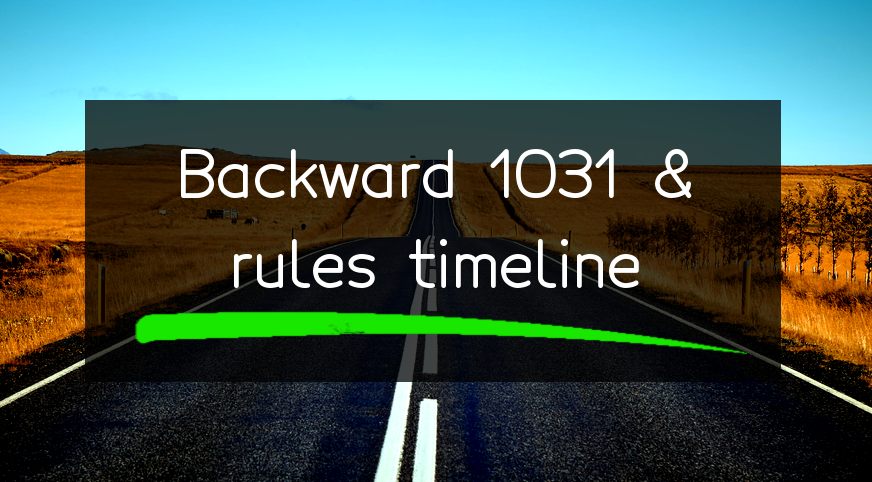A Reverse 1031 Exchange is a type of real estate transaction that allows an investor to purchase an investment property before selling an existing property, without incurring any tax liabilities. Here's a breakdown of how a Reverse 1031 Exchange works.
Timeline:
- 1. Identify Accommodator: The first step is to identify an experienced accommodator a Qualified Intermediary that can facilitate the transaction.
- 2. Survey Potential Replacement Property: The accommodator works with the investor to survey potential replacement properties that meet the investor's needs.
- 3. Secure Replacement Property: Once a suitable replacement property has been identified, the investor acquires it and places it in a holding entity, which is established by the accommodator.
- 4. Sell Existing Property: The investor must now sell their existing property within 180 days.
- 5. Complete Reverse Exchange: Once the existing property is sold, the accommodator transfers the title of the replacement property to the investor.
Rules:
- 1. 45-day identification period: The investor must identify one or more potential replacement properties within 45 days of acquiring the replacement property.
- 2. 180-day exchange period: The investor must complete the Reverse Exchange within 180 days of acquiring the replacement property.
- 3. Like-kind exchange requirement: The replacement property must be a "like-kind" property to the property being sold.
- 4. Value limits: The value of the replacement property cannot exceed 200% of the value of the property being sold.
- 5. No personal use: Neither the investor nor their family can use the replacement property for personal use until the exchange is completed.
- 6. Record-keeping: The investor must keep accurate records of all transactions related to the Reverse Exchange.
- 1Securing a desirable replacement property: If an investor has identified a desirable replacement property that is likely to be sold quickly, they may choose to use a reverse exchange to acquire that property before selling their original property. This guarantees that the investor will be able to acquire the replacement property they desire.
- 2Avoiding potential losses: In a fast-moving real estate market, there is a risk that an investor may not be able to acquire a suitable replacement property after selling their current property. By using a reverse exchange, the investor can avoid the risk of being stuck with the cash proceeds from the sale of the original property without being able to acquire a replacement property.
- 3Locking in a low-interest rate: If an investor is concerned about rising interest rates, they may choose to use a reverse exchange to lock in a favorable interest rate on the replacement property before selling the original property.
- 1Identify a Qualified Intermediary: The taxpayer must identify a qualified intermediary (QI) to facilitate the exchange process.
- 2Purchase of Replacement Property: The taxpayer purchases a replacement property through an exchange accommodation titleholder (EAT).
- 3Notification to the IRS: The EAT notifies the Internal Revenue Service (IRS) of the exchange by filing Form 8824.
- 4Transfer of Old Property: The taxpayer transfers the title of the old property to the EAT.
- 5Safe Harbor: The taxpayer must adhere to the IRS safe harbor guidelines for the reverse exchange.
- 6Sale of the Old Property: The taxpayer sells the old property within 180 days of acquiring the replacement property.
- 7Use of Exchange Proceeds: The proceeds from the sale of the old property are used to pay off any debt and make necessary improvements to the new property.
- 8Completion of Exchange: The exchange is considered complete when the taxpayer acquires the title to the replacement property, and the sale of the old property is closed.
- 1Identify the relinquished property: The first step in a 1031 reverse exchange is to identify the property that the taxpayer wishes to relinquish or sell. This property must be held for investment or business use and must qualify for 1031 exchange treatment.
- 2Identify the replacement property: The next step is to identify the replacement property that the taxpayer wishes to acquire. The purchase of the replacement property must occur before the sale of the relinquished property.
- 3Enter into a reverse exchange agreement: The taxpayer must enter into a reverse exchange agreement with a qualified intermediary (QI) who will hold the title to either the relinquished property or the replacement property until the exchange is completed.
- 4Acquire the replacement property: The QI will acquire the replacement property on behalf of the taxpayer. The taxpayer will provide the funds for the purchase, and the QI will hold the property until the exchange is complete.
- 5Transfer the relinquished property: Once the replacement property has been acquired, the taxpayer will sell or transfer their relinquished property to the buyer.
- 6Complete the exchange: The QI will transfer title of the replacement property to the taxpayer, and the exchange will be complete. The taxpayer must meet all the requirements for a 1031 exchange, including identifying replacement property within 45 days and completing the transaction within 180 days.
- 7Tax reporting: The taxpayer must report the exchange on their tax return and file Form 8824 to report the gain or loss on the exchange.
What Is a Reverse 1031 Exchange?
A reverse 1031 exchange is a type of tax-deferred exchange under Section 1031 of the Internal Revenue Code that allows a taxpayer to acquire a replacement property before selling their existing property. In a reverse 1031 exchange, the taxpayer acquires the replacement property through an exchange accommodation titleholder (EAT) or an exchange accommodation agreement (EAA) before selling the relinquished property. The EAT or EAA holds the title to the replacement property until the taxpayer is able to sell the relinquished property and complete the exchange. This type of exchange is typically used when the taxpayer cannot find a replacement property before selling their relinquished property or needs to close on their replacement property quickly.
Why Do a 1031 Reverse Exchange?
It allows an investor to acquire a replacement property before disposing of the original property, which is the opposite of a traditional 1031 exchange. The reasons for doing a 1031 Reverse Exchange could include:
Overall, the decision to do a 1031 Reverse Exchange will depend on the investor's specific situation and goals. It is important to consult with a knowledgeable real estate professional and tax advisor before making any major investment decisions.
Reverse 1031 Exchange Timeline
A reverse 1031 exchange is a process where a taxpayer acquires a replacement property before selling their current property. The timeline for a reverse 1031 exchange is as follows:
The timeline for a reverse 1031 exchange can vary depending on the complexity of the transaction and the parties involved. It is important to have a qualified intermediary and follow IRS guidelines for a smooth exchange process.
Steps of a 1031 reverse exchange
A 1031 reverse exchange, also known as a reverse Starker exchange or a reverse construction exchange, is a type of tax-deferred exchange whereby the taxpayer acquires replacement property before selling their existing property. The steps of a 1031 reverse exchange are as follows:
It is important to note that a 1031 reverse exchange can be complex and requires significant planning. Taxpayers should work with a qualified tax professional and QI to ensure compliance with all IRS regulations.
Exchange First vs. Exchange Last
Exchanging first and exchanging last are two different ways of exchanging objects or positions.
Exchanging first refers to the act of swapping the first position of two or more objects. For example, if we have a list of numbers [2, 4, 6, 8], and we exchange the first two numbers, the new list will become [4, 2, 6, 8].
Exchanging last, on the other hand, involves swapping the last position of two or more objects. For instance, if we have another list of numbers [1, 3, 5, 7], and we exchange the last two numbers, the new list will become [1, 3, 7, 5].
In summary, exchanging first is about swapping the items or positions that come first in a sequence, while exchanging last is about swapping the items or positions that come last in the sequence.
Just one more thing: if you liked the article, please like us on social media and share this article with friends.



